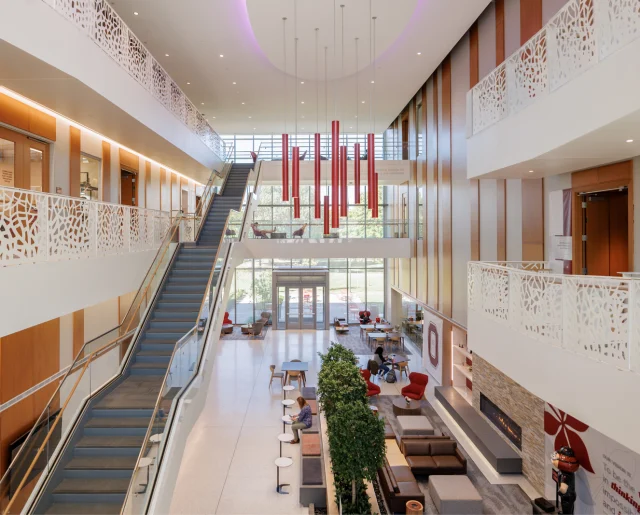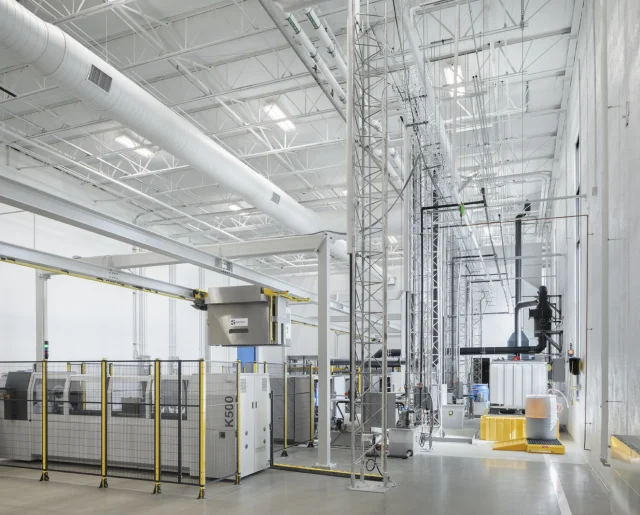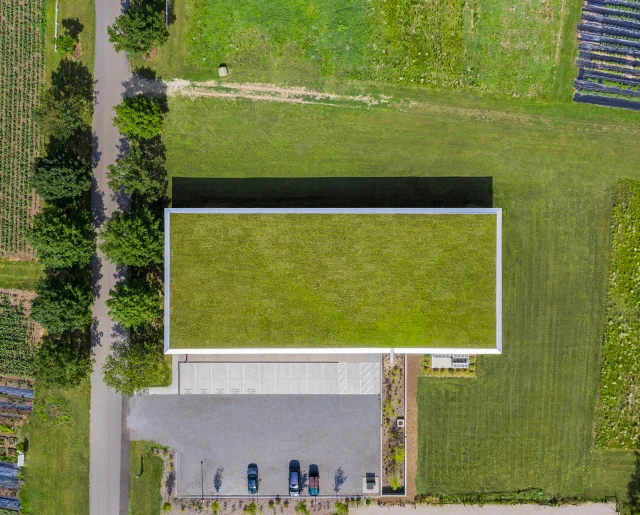The 4 Things To Know About Sustainability Action Plans

As time quickly approaches the year 2030, there have been more and more companies announcing their sustainability-related goals for 2030 and beyond. This comes with heightened pressures to reduce our negative environmental and social impacts, so that we can strive to decrease the severity of climate change consequences in the future. These sustainability-related goals can vary in their timelines, their areas of focus, and their metrics for success. The goals are (and should be) highly individualized for each organization, because sustainability is not a one-size-fits-all endeavor.
To be successful and to back up these sustainability-related goals, there needs to be a plan. Some sort of thought-out, intentional, and directional plan where each goal is given metrics, timelines, champions, and accountability. For most organizations, they create a Sustainability Action Plan (SAP) that does just that.
1. What is a Sustainability Action Plan?
A Sustainability Action Plan is a roadmap for an organization to go from where they are now, to where they want to be, often decades down the road. Primarily, these are in terms of their sustainability-related goals. These can be anything that is derived from the “Triple Bottom Line” of sustainability, which is: people, planet, profit. True sustainability cannot be achieved without a balance and consideration of all three components. Let’s dive into all three areas:
- People = The impacts and benefits to the people who design, construct, live in, work in, and constitute the local community and are influenced, directly or indirectly, by a project. This area includes overarching concepts like: health and wellness; diversity, equity, and inclusion.
- Planet = The impacts and benefits of a project on the natural environment, locally and globally. This includes all aspects of the project from extraction of materials through design and construction all the way to disposal or reuse at the end of life. Some key ideas that fall into this category are: carbon and greenhouse emissions, waste, water, and energy.
- Profit = The economic impacts and benefits of a project for all the stakeholders (not just the project owner), including the impact on local communities and individuals.
A great action plan sets goals in all three areas that are realistic, but also a challenge. These goals are set based upon where the organization is at when they start this process.
2. Typical Contents of a SAP
There are many different kinds of SAPs, and thus many different ways they can be configured. Below are some of the most common components:
- The Organization’s Why:
Critical to a great action plan is having a clear definition and understanding of the organization’s “why”. Typically, this shows up in the form of a narrative explaining the key values, missions, and/or stories of how the organization decided to embark on this journey. This component sets the stage for the rest of the document, and acts as a guiding light and gut-check for decades to come. When obstacles show up over the course of decades, this helps to navigate those with intention.
- Baseline Data and Subsequent Analysis:
It’s impossible to tell where to go, and how to get there, unless you have a firm understanding of where you are now. Therefore, gathering baseline data and then analyzing it are truly vital. This cannot be overstated, because it’s so integral to what makes an action plan work.
Baseline data includes anything that an organization intends to set their big sustainability goals around. For instance, if your organization aims to set a goal of increasing diversity within your staff, the first step to setting the goal is to determine how much diversity you have now. Or, if your organization wants to reduce your energy reduction significantly, then it’s important to collect all energy bills as far back as you can (a minimum of one year is preferred).
Just gathering the data isn’t enough, though. As such, the analysis part has to take place. This step helps to identify trends, areas in need of improvement, and any cause/effect relationships.
- Precedent Research:
It’s helpful to see how other projects, organizations, or even entire cities have conquered or are working towards their big sustainability goals. Therefore, doing some precedent research and analysis early on in the planning process can help be a guiding post for setting goals, milestones, metrics, strategies, and actions. Therefore, it’s very common for these inspirational projects to be identified within a SAP.
- Goals, Milestones and Check-ins:
After the initial baseline data analysis and precedent research, it’s time for organizations to set their big goals. For each of those big goals, there’s then a timeline with milestones and regular check-in points identified. The milestones are typically smaller, intermediate goals with a cadence of regular check-ins along the way.
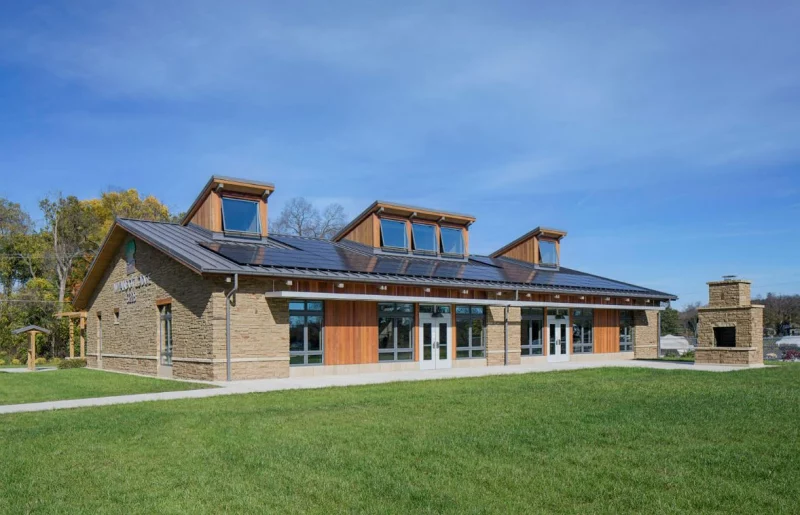
For example, if your organization has a big goal of 50% reduction in energy usage by 2030, an intermediate milestone might be 25% (or higher) reduction by 2026. Regular check-ins with relevant stakeholders help to keep everyone on track. Additionally, it provides an opportunity to “course correct” if something isn’t going according to plan. It is best to identify and resolve any issues as early as possible on the way to meeting those big goals.
- Strategies and Actions:
For each big goal and intermediate milestone established, a series of strategies and actual actions are identified for how the organization intends to be successful. This is where budgets, fundraising, internal champions, and organizational accountability and involvement come into play. This is where the method for measuring success is determined. Are you judging your success based upon the reduction of your energy bills, or the reduction in carbon emissions, or both?
- Progress Tracking and Budgets:
A challenging part to anything these days, but also in developing SAPs, can be projecting future costs of items based upon current pricing. Obviously budgets are a really important aspect in considering sustainability goals, or any endeavor. Therefore setting up a framework for tracking metrics and budgets each quarter or year can help to keep budgets aligned with organizational goals.
This list is by no means exhaustive, but these components can be found in most Sustainability Action Plans that are available online. As previously mentioned, sustainability is not a one-size fits all thing. So what worked for one entity might not work for yours, and that’s ok. Customize as needed for you, and your organization, to be successful.
3. The Keys to Success
In addition to the points made above, there are three very important elements to consider when looking at how Sustainability Action Plans are successful. It comes down to organizational culture, internal champions, and stakeholder engagement. Without careful consideration and intentionality with these components, action plans tend to be less successful reaching their goals. Let’s explore each component more in detail:
- Organizational Culture:
When talking about organizational culture through a SAP lens, we are focused on creating or facilitating a culture that embodies and believes in sustainability in their everyday lives. This is not just talking the talk, but walking the walk. In order to achieve a cohesive unit, it’s important to clearly communicate the goals of the SAP, and the reasonings behind them. Explaining to all stakeholders WHY those goals are important to your organization goes a long way. This kind of transparency can be so vital to establishing a trust and team mentality when striving for those big goals mentioned above.
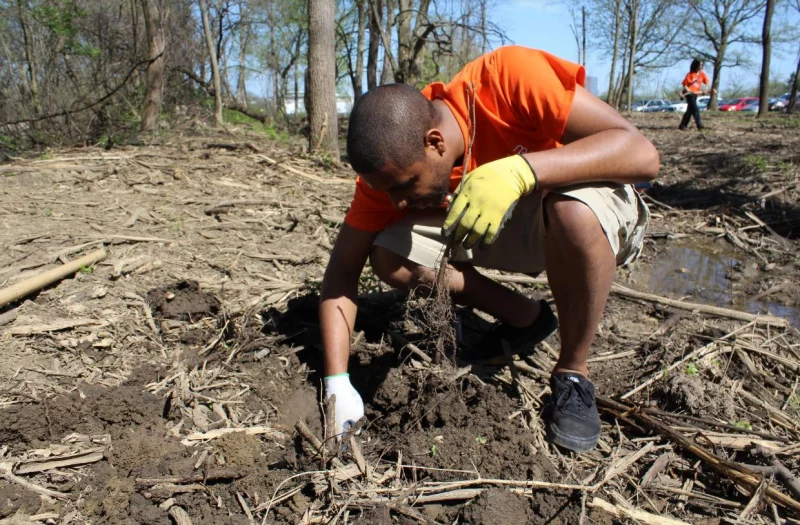
Culture can also be established by having internal challenges and incentives to encourage participation and engagement. For example, if the goal is to reduce transportation emissions 50% by 2030, then an incentive could be providing a free or reduced cost bus, or other public transportation, pass to every employee. Subsequently, if there’s a reward, or even bragging rights, for the person who rides the bus the most times to work in a month, that’s an example of an internal challenge. Some healthy competition can be a powerful motivator.
- Internal Champions:
Within an organization it’s critical to determine who the internal champions are going to be from the beginning. Those individuals who believe wholeheartedly in the why, and who will help drive progress for the organization over the course of years to come. This can take many forms, though often it’s a Sustainability professional at the firm, but it can be anyone that’s willing to be that leader. If you have a large organization that is complicated and complex to manage, empowering multiple people to be champions in certain areas of the Plan can be a great way to go.
- Stakeholder Engagement:
Engaging any relevant stakeholders in the Action Plan process and planning is important to its overall success. When we talk about stakeholders, this is anyone who has a role in the organization, such as: employees, investors, customers, and suppliers. This element encourages individuals, who might not be part of the overarching planning process, to voice their questions, comments, and concerns about the big goals – and the strategies and actions to get there. Ultimately, this gives individuals a sense of ownership and a role in how the plan turns out. It’s critical the stakeholders feel that their voices are being heard, and their ideas are being considered. Stakeholder engagement is an opportunity to hear voices from many different aspects of your organization. The more perspectives you hear from, the better off you’ll be.

A common way to involve stakeholders is to hold a series of sessions that dive into each main goal of the Plan. Sometimes these can be quite time consuming, so be sure to allow for ample time to discuss everything. Give yourself several weeks to spread out the opportunities, and it’s advisable to select different times of the day to allow for inclusion of all stakeholders. By alternating when the sessions are, you can include people that might be on different shifts, on vacation, or at meetings.
Additionally, it’s helpful to locate these sessions in a central location or locations. If your organization is spread across multiple locations, identifying a couple of locations for people to gather can maximize participation.
4. How to Start your Sustainability Action Plan
Now that we have gone over what a SAP is, the key components, and how to be successful – let’s recap the steps to starting one for your organization. Remember, this is just a guideline, and not an exhaustive list. Adapt and customize to your organization’s needs.
- Determine your why.
- Gather your baseline data (energy bills, water bills, etc.)
- Analyze the data
- Conduct precedent research
- Set your big goals
- Set the milestone dates and determine a check-in cadence
- Engage relevant stakeholders at multiple stages of the process
- Establish how each goal will be measured and tracked
- Determine who your company’s internal champions are
- Develop the first draft of the SAP
- Set up a period to review, edit, and alter the SAP before the final version is released
- Launch the SAP!
After you have launched your SAP, it’s important to follow those check-ins and milestones. If there’s a point at which you determine something isn’t working for you, adjust it. A sustainability action plan should be a living document. Something that changes as your organization grows and changes, but also changes with the times. It’s impossible to know what kinds of technology and advancements will be made, the change in costs of renewable energy or sustainable technology. Maybe a grant opportunity arises that encourages you to tackle a particular goal sooner than later. It’s best practice to set up a sequence for the SAP progress to be reviewed holistically, and then updated as need be.
In the end, the Sustainability Action Plan is intended to be customized to the needs and vision of your organization. Don’t be afraid to adjust components, or even change goals as more information and technology becomes available. A true sustainable world, one defined by healthy, equitable, and resilient communities is a global effort. We must all work together to achieve that common good for all!
Upcoming:
In an upcoming sustainability article, we are going to dive into the differences between ESG (Environmental, Social, Governance) and SAPs (Sustainability Action Plans) – so be on the lookout for that!
